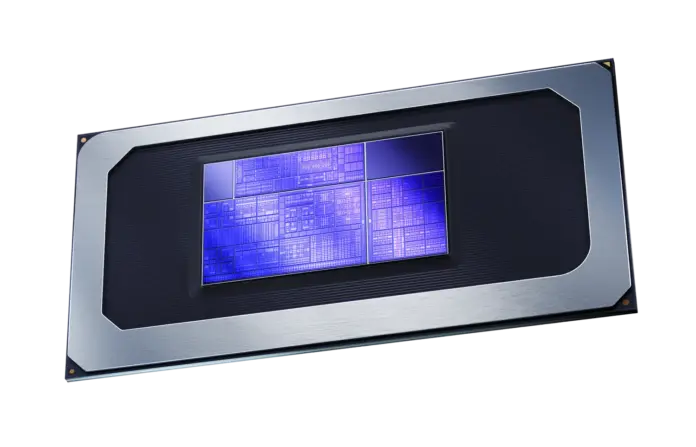Intel today takes the wraps off its next-generation Panther Lake architecture. The first outing is for chips designed around it to power many of next year’s leading laptops. Following on logically from Lunar Lake, it’s a big deal for numerous reasons, not least because of the existential threat posed by AMD, but also because it represents the best silicon from the all-new 18A process, which will also be present in next year’s server-optimised Clearwater Forest chips.
18A is Panther Lake’s Performance Bedrock
The 18A process brings at least two key innovations to the table: RibbonFET and PowerVia backside-power delivery. Up until now, Intel’s silicon has been based on FinFET 3D transistor technology, debuting well over 10 years ago. RibbonFET improves upon it by providing better current control at all meaningful voltages, leading to improved performance per watt, which is a key determinant of overall throughput in power-constrained environments such as laptops.
The mechanics of how it does this are actually simple enough. Whereas with FinFET – a major breakthrough in its day – a transistor’s gate surrounds the channel on three sides of a vertical fin (hence the name 3D transistor), there are limitations in its continued use emanating from just how tightly packed transistors are on leading-edge processes.
Enter RibbonFET, which, in effect, replaces the traditional fin with vertical stacks of what Intel calls nanoribbons – you see four in the picture below – enabling each channel to be surrounded on all sides. This is why this technology is also known as gate-all-around (GAA) and the upshot is, as I mention above, better electrostatic control and less leakage. The intrinsic design of nanoribbons also pave the way for future smaller processes.
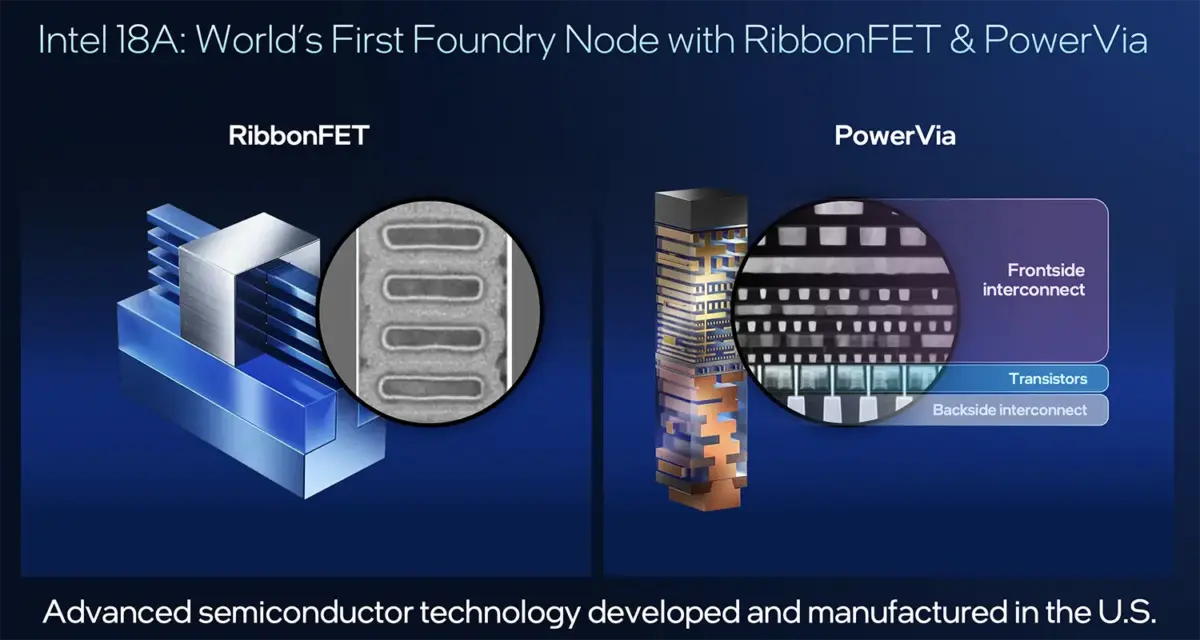
PowerVia backside-power delivery, meanwhile, addresses power and complexity in a different but equally important way. Cutting-edge SoCs carry an inordinate number of signals and power delivery between areas. Denser designs packed with ever-smaller transistors inevitably lead to congestion and a voltage-reducing phenomenon known as IR drop that’s caused by increasing wire resistance. Ask any circuit engineer and it’s a real problem in the Angstrom-era of building out chips. PowerVia mitigates against it by moving metal interconnects and bumps to the back of the die, whilst using ultra-small TSVs to route power more efficiently. Intel reckons this increases ISO-power performance by up to 4%. Every little helps.
Combined, RibbonFET and PowerVia help offer 18A up to 15% better performance per watt and 30% better chip density vs. the Intel 3 process node in production today. Without these advancements, the leading-edge process wouldn’t be able to compete with the latest that TSMC has to offer, and they’re key in enticing customers towards Intel Foundry.
Panther Lake Overview
Outside of process, there’s a lot to unpack on mobile-optimised Panther Lake. There’s new everywhere, from CPU cores, graphics, NPU, and IPU, and each segment is optimised for newer processes, according to missives from company officials during the recent Tech Tour in Arizona.
Built for laptops first and foremost but also coming to desktop in some form in 2026, I imagine, it’s easiest to compare Panther Lake to in-market Lunar Lake and examine benefits that accrue. Intel hasn’t furnished us with exact model numbers and so forth, though it’s generally accepted that products derived from Panther Lake will be known as Core Ultra 300 Series, thus carrying on the nomenclature in existence today.
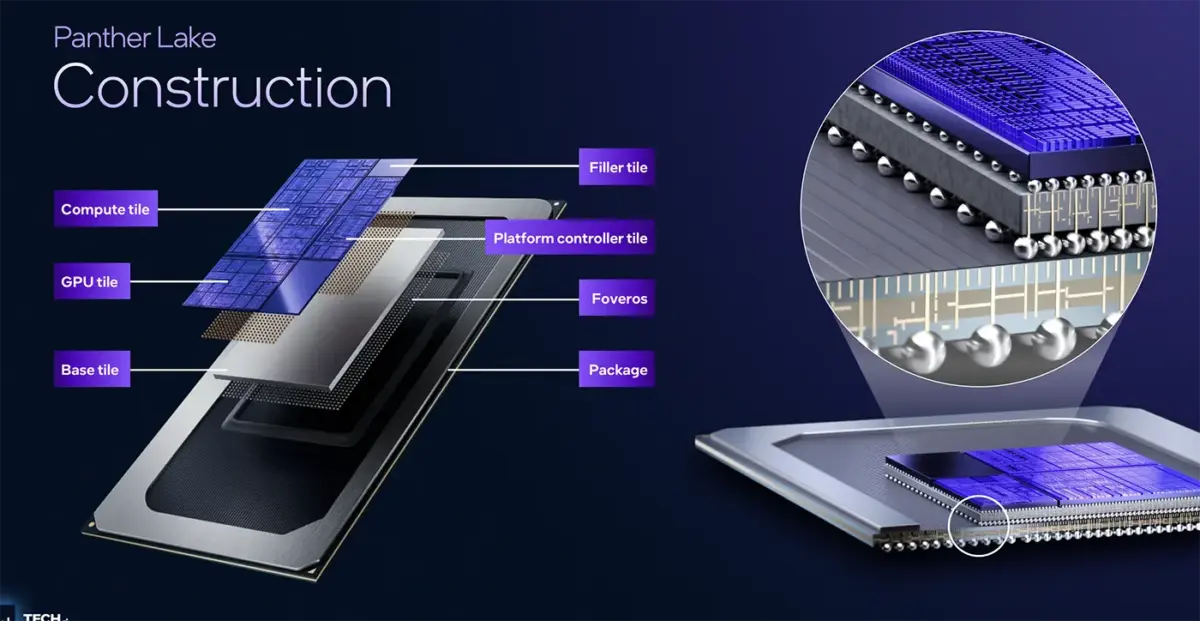
At its heart, Panther Lake retains the multi-tile approach of its forebears. Though Intel is not calling out specifics on this slide, the tiles are not all made by its own foundries. Far from it, actually, as only the main Compute tile uses 18A. Note how, unlike Lunar Lake, the GPU gets its own tile, manufactured on the Intel 3 process. Known as Xe3 and touting Celestial technology for the first time, disaggregating it from the main tile is helpful for cross-segment scaling. The real-world implication is that you can mix and match graphics for various custom SKUs. TSMC provides the Platform Controller tile and Intel’s in-house Foveros ties all of them together.
Lunar Lake’s Lion Cove P-cores and Skymont E-cores are superseded by Panther Lake’s also-non-hyperthreaded Cougar Cove and Darkmont, respectively. Taking the big cores first, Cougar is a minor evolution of Lion and therefore represents single-digit ISO improvements. Intel says it offers understandably better performance at lower power, made possible by the switch to energy-efficient 18A. Darkmont also uses process rather than architectural leaps as the main driver in performance, so it’s clear that 18A is ever so important here.
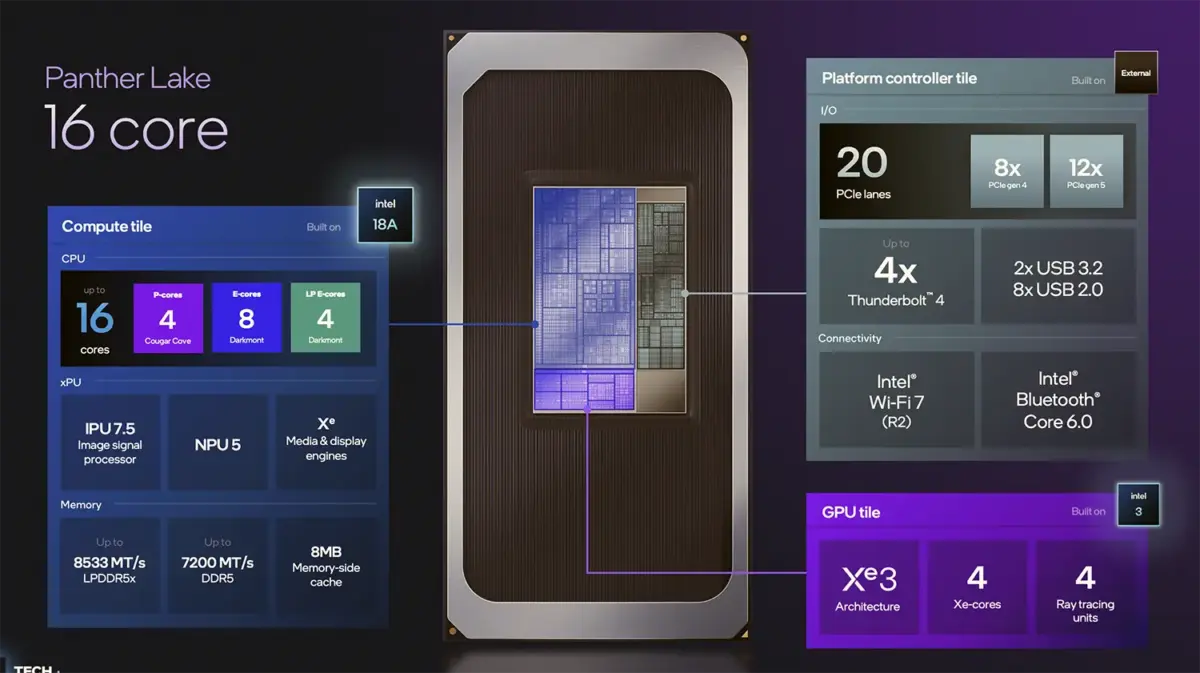
I’ll come on to exact configurations further down, of course, yet zooming in on a particular SKU is illuminating because it shows not all CPU cores are the same, even if their name is. The very best Lunar Lake models carry four P-cores and four E-cores. Panther Lake ups this to 16, so a doubling sounds wonderfully impressive, yet the devil is in the details. Only four cores are the more powerful P variety, while a further 12 are split between eight regular Darkmont E-cores and four low-power variety known as LP.
New Graphics
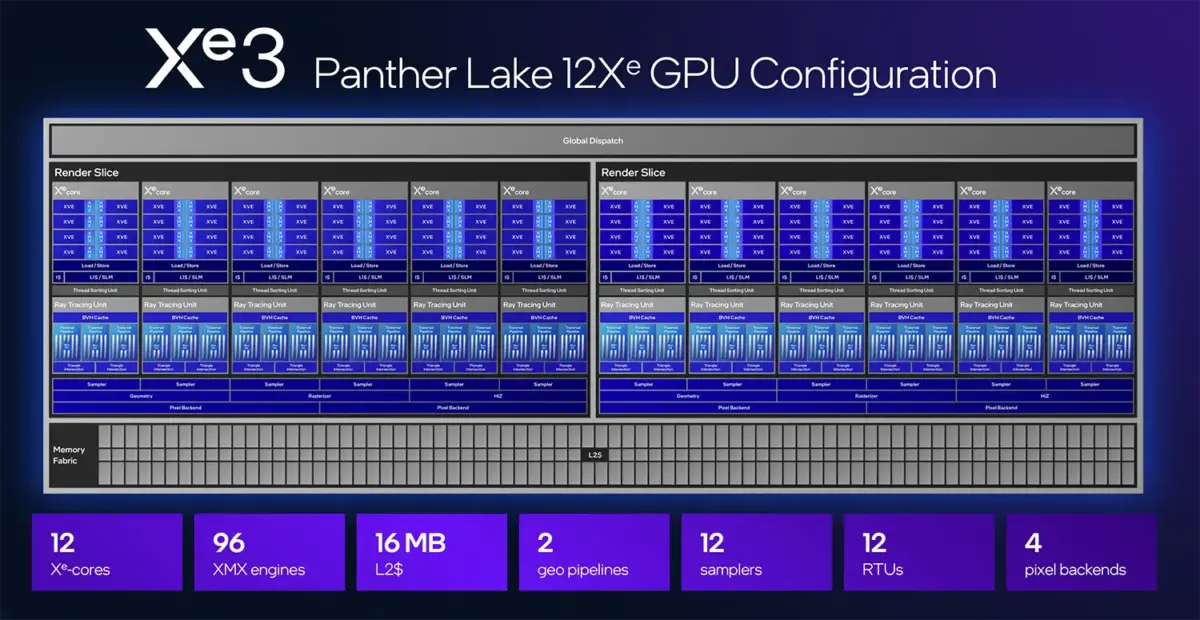
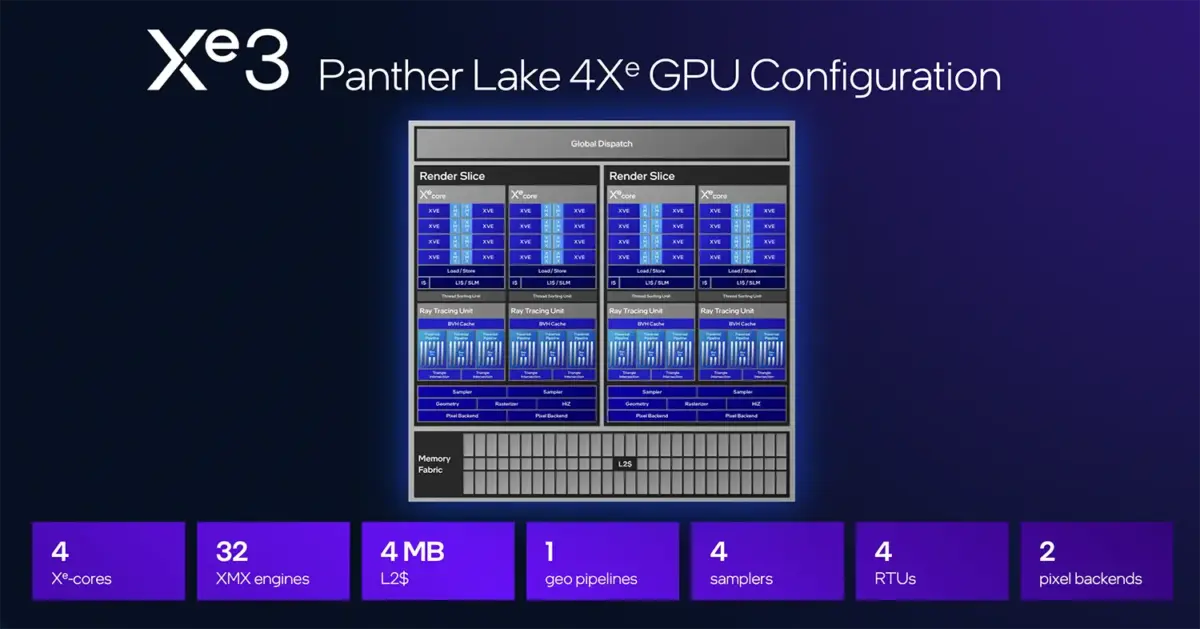
Jumping over to the GPU, Xe3 is a natural change and is the first time I’ve seen third-generation graphics in hardware. Of note, Intel expands the number of Xe cores per render slice, from four to six, along with a commensurate bump in improved ray tracing units. Knowing there are two configurations, with either four and 12 render slices, the total number of cores is up by 50 per cent this generation. Furthermore, Intel doubles the amount of L2 cache for the big-ass Xe3 version while increases per-slice L1 cache by 33%. Generally speaking, the more on-chip cache you have, the better and more consistent the performance.
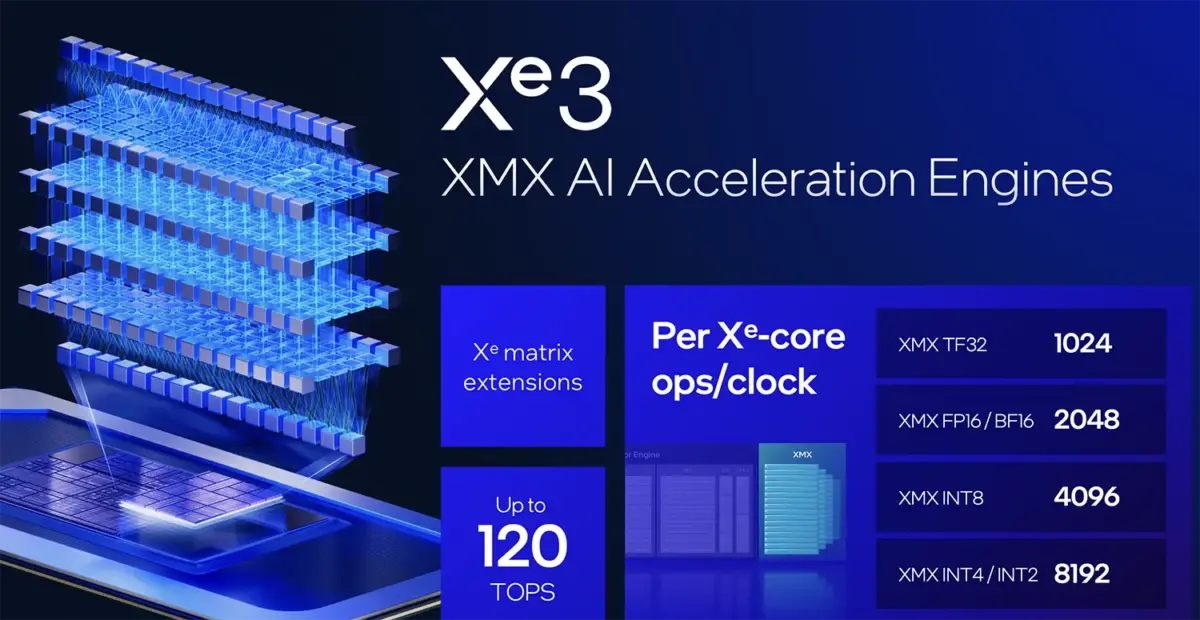
I don’t yet know how the larger, improved graphics will translate to higher frame rates in gaming, but there’s more serious horsepower for AI tasks thanks to an enhanced XMX AI Acceleration Engine. Intel is quoting a potential 120 TOPS, compared to merely 67 TOPS from the best of Lunar Lake. Agentic AI, anyone?
Configurations
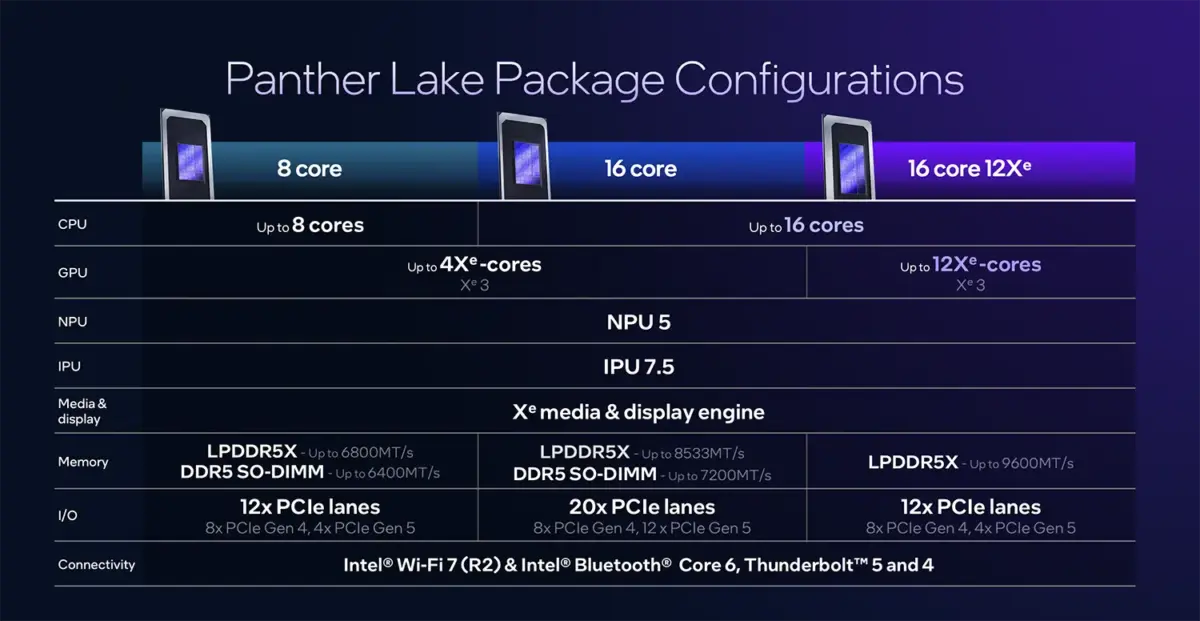
Looking towards mobile first, there are three distinct Panther Lake variants. An eight-core CPU version cosies up to entry-level Xe3 graphics and is primed for lower-cost laptops and, potentially, handhelds. You can bump up to a 16-core CPU design that retains the same graphics, or go the whole hog and opt a 16-core CPU and 12-core GPU, with the latter configuration also benefitting from faster RAM, which will make a positive difference given the larger, more performant GPU. I’m curious to know what the TDPs are for high-frequency models in each category.
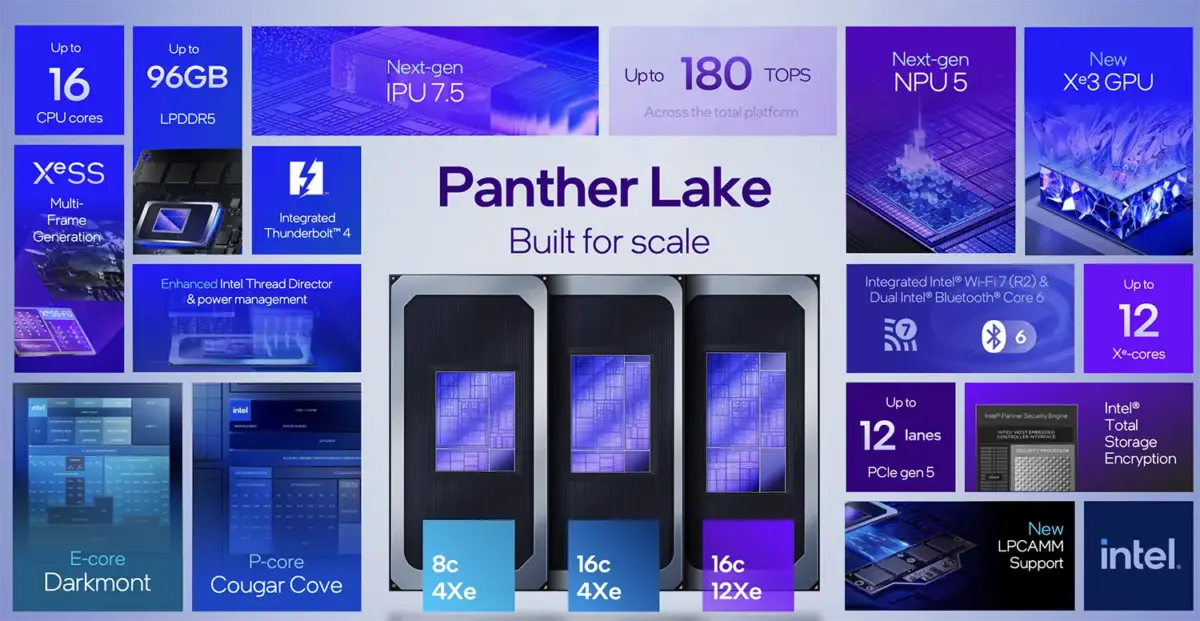
The Wrap
Stitching it together, on paper, Panther Lake offers twice as many CPU cores as Lunar Lake – 16 vs. 8 – albeit they are not of the same ratio, as the top-bin SKU houses four P-cores, eight standard E-cores, and four further LP E-cores. There’s nominally 50% more GPU cores, though I expect performance to be higher than a linear increase due to architectural refinements. An enhanced Thread Director ties an ever-increasing number of cores together, as well.
It’s clear to me that mobile-first Panther Lake looks to leverage the best bits of Lunar Lake and Arrow Lake mobile into one appealing solution, presented as three distinct offerings for laptop-makers. The 16-core CPU and 12-core GPU model offers up to 180 TOPS across the platform, making it a considerably more powerful AI inferencing solution than what’s in the field today.
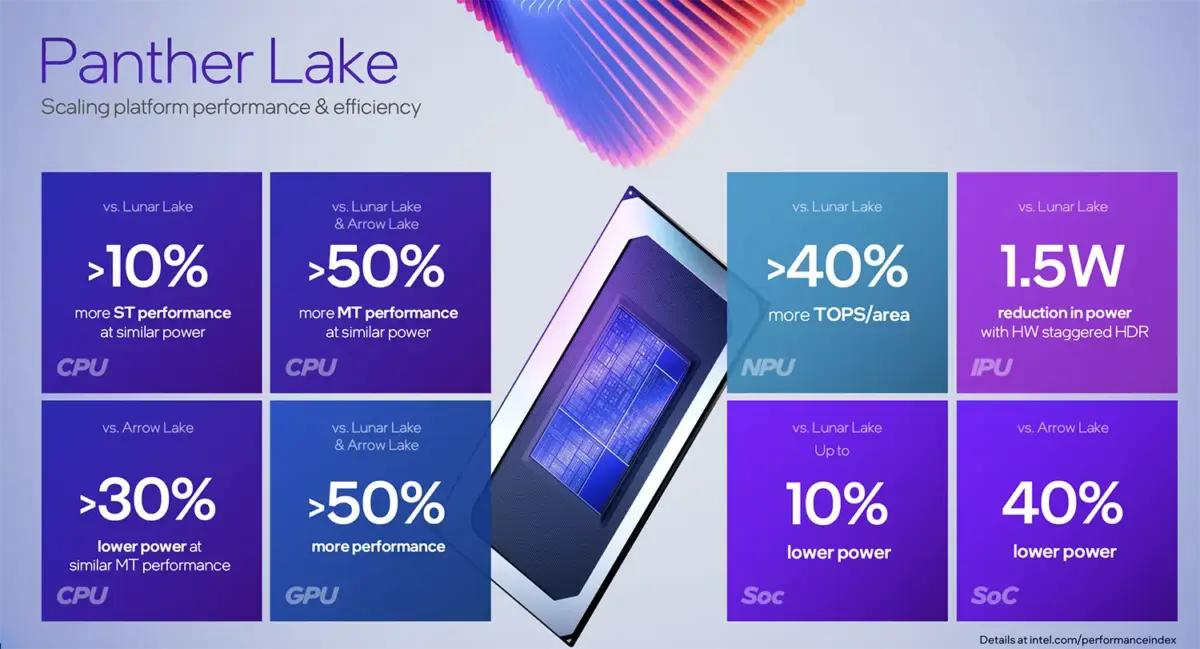
On first glance, Panther Lake has a lot going for it. I’m keen to see how Intel productises the various SKUs and how well manufacturers can leverage all the new technology present here.


